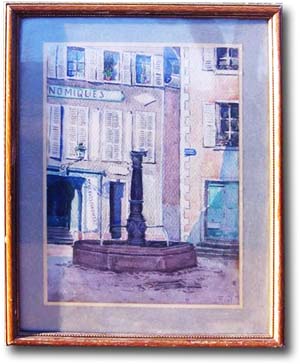
How to frame a watercolour
the choice of frames and colours
Of all the pictorial techniques, and due to the very nature of its support, watercolour is undoubtedly one of the most delicate and fragile.
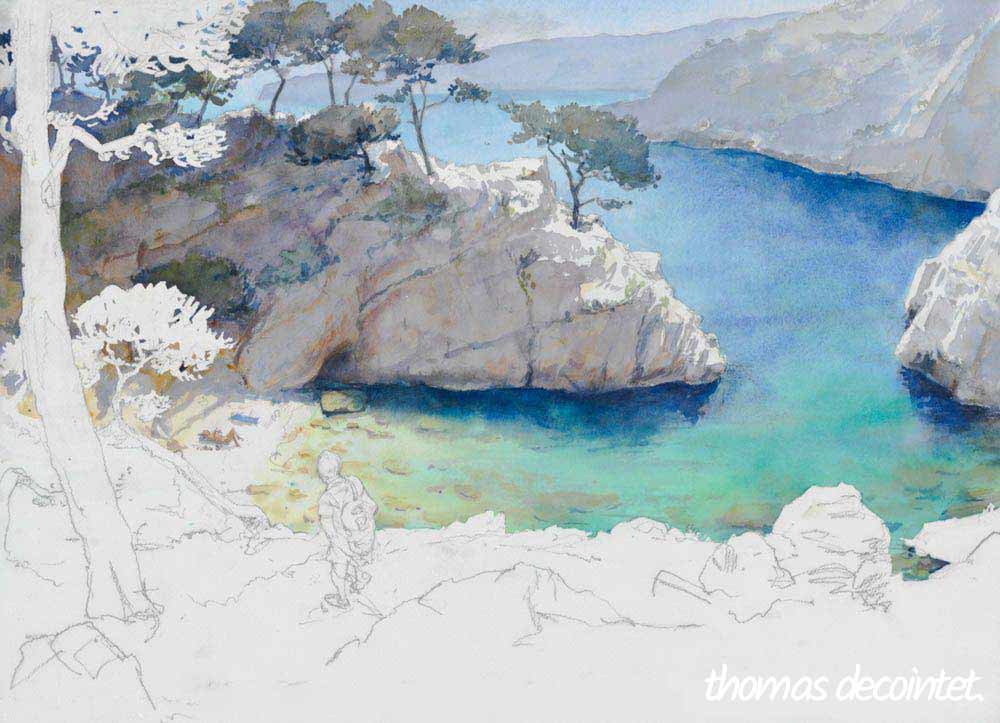
It is therefore necessary, before exposing it, to protect it from anything that could irreparably damage it.
Then, choose a frame that highlights her and makes her forget herself to better attract attention to her.
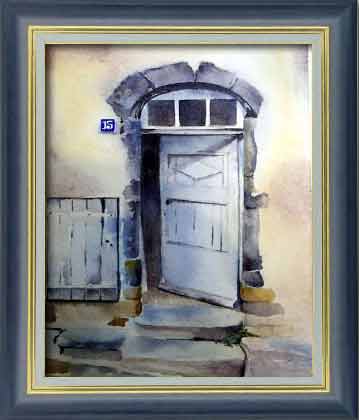
 Protecting watercolour
Protecting watercolour
First of all, it must be isolated from external aggressions: dust, greasy vapours, fingerprints of unscrupulous visitors and also insects that penetrate everywhere, especially on stormy evenings...
Then, it is necessary to ensure the good conservation of the support and pigments, in particular by avoiding direct exposure to ultraviolet rich lights.
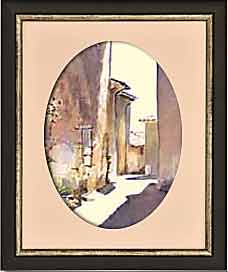
This requires in all cases a protective glass, a frame with a moulding, a passe-partout and a rigid base cardboard which will keep the support flat.
The glass, the passe-partout, the watercolour and the base cardboard, joined by a gummed kraft which ensures the waterproofness of the whole, will form the "package" which will in turn be placed in the frame itself inside a rabbet.
 The protective glass
The protective glass
As for the protective glass, banish the anti-reflective glass (since it will not be pressed against the watercolour) and prefer a 2mm glass... or even a plexiglass sheet (more fragile to scratches). Note that for watercolours exposed to daylight you can also use anti-UV glasses.
And don't forget that the pigments that make up the watercolour (and also the pastel) are sensitive to direct sunlight... Take into account when hanging your frame on the wall!
 The choice of frame
The choice of frame
It is necessary to find the frame that "fits" well with the watercolor.... You will know that the frame you have chosen is fine if you can see the work while forgetting the frame!
Its dimensions must remain reasonable... Don't put a wide frame on a small watercolor! Avoid at all costs oversizing that would divert attention from the work itself. This type of frame is perfect for an antique miniature work painted in oil... Not for a modern watercolor!
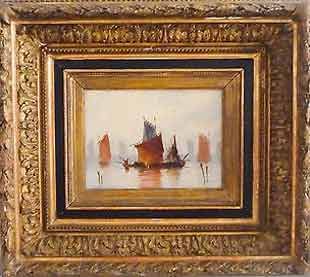
 To avoid: too wide a frame
To avoid: too wide a frame
In the same way, unless you absolutely want to, do not commit anachronism.... An old watercolour will be more comfortable in a setting of its time (or one that reminds it) and vice versa. Avoid mixing genres!
Most of the time, the "rod" of the frame must be thin, less than 2cm wide, often reduced to a coloured rush. The work will be well highlighted in a wide mat of neutral colour.
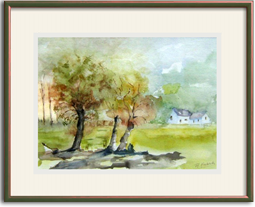
Choose the color of the "rod" (the moulding) so that it is in harmony with the watercolor... rather than with the wall on which it will be exposed! Dare to use contrasts to bring out the subject better.
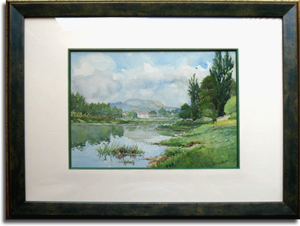
However, avoid choosing the dominant colour.... If the overall tone of the watercolour is pink, do not take a pink moulding... prefer another of its component colours (a secondary colour).
If you still prefer to stay in the tone of the painting, take the darkest colour: in the frame above, the dark green frame and matching bevel highlight the green tones of the subject. Note the green "bevel" that highlight the watercolor.
 The "passe-partout and the bevel
The "passe-partout and the bevel
The "passe-partout" is also called mat...
Their role is essentially to avoid any contact between the glass and the watercolour. This could lead to an accumulation of moisture and, as a result, the growth of moulds that could damage the watercolour.
In addition, the passe-partout must contribute to the enhancement of the work... it must therefore have a neutral and generally light colour, matching the tones of the watercolour in order to create a harmonious whole. The passe-partout makes a kind of transition between the frame and the "painting". It must therefore be chosen with great care.
We admit that in general, it must have dimensions at least 5cm larger in all directions than those of watercolour: if the visible part of the latter measures for example 13cm by 18cm, then your pass everywhere must measure at least 13+5+5 = 23cm and 18+5+5= 28cm (the size of the passe-partout determines the size of the "package" that will be placed in the frame.
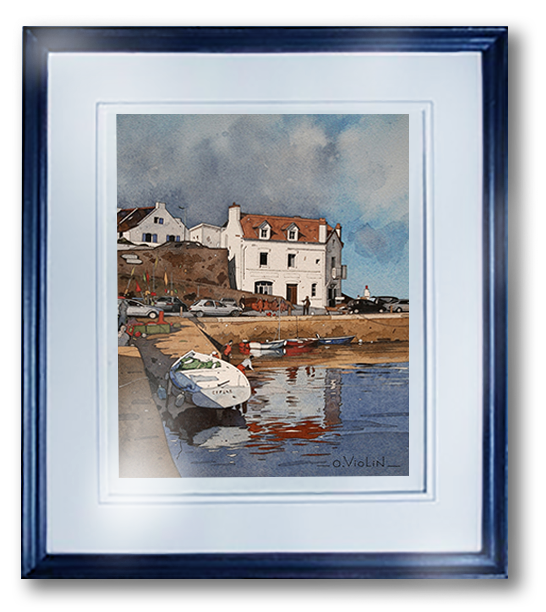
In framing technic, the "bevel" is a thick cardboard (between 3 and 5mm) with edges cut at right angles (French bevel) or 45° (English bevel). The inner edges are then covered with a decorative paper in accordance with the colours of the watercolour...In the USA, framers are satisfied with a 1.5mm mat with bevelled edges.
A bevel gives a lot of depth to the frame and highlights it.
If you wish to give more depth to your frame, you will place a "bevel" (straight or at 45°) between the mat and the watercolour.
In this case, you can give a more intense color to this bevel to better highlight the subject.
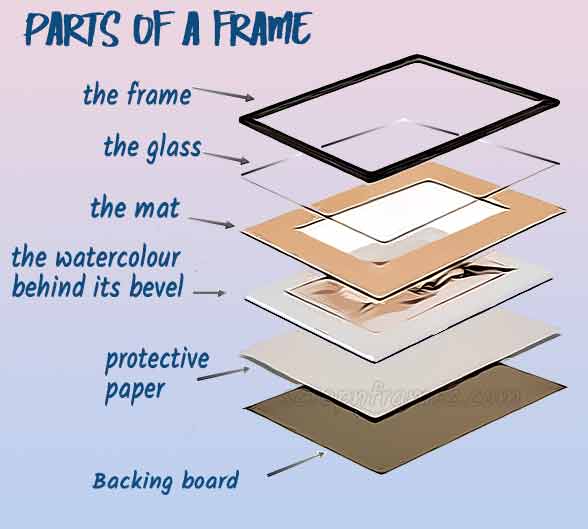
Similarly, if you are not afraid of overloading your frame too much, it is possible to add threads to the mat if the framed subject supports it.
In any case, simplicity will remain preferable to sophistication, as in the latter example where a a simple "old blue" passe-partout with white overhangs particularly highlights this "Fontaine de la Place"...
